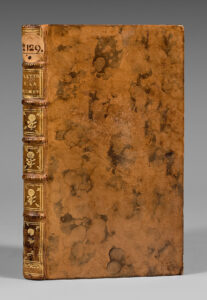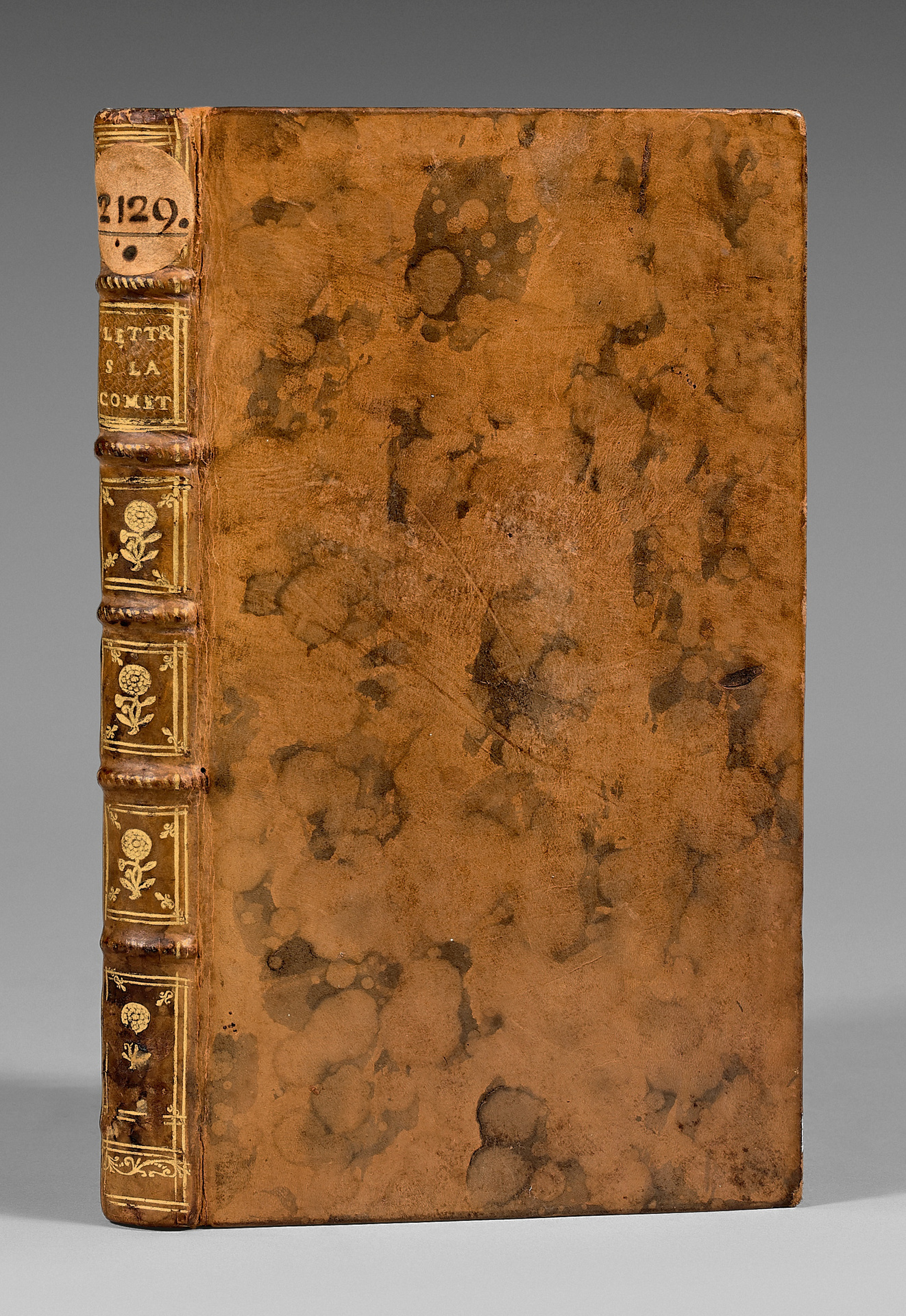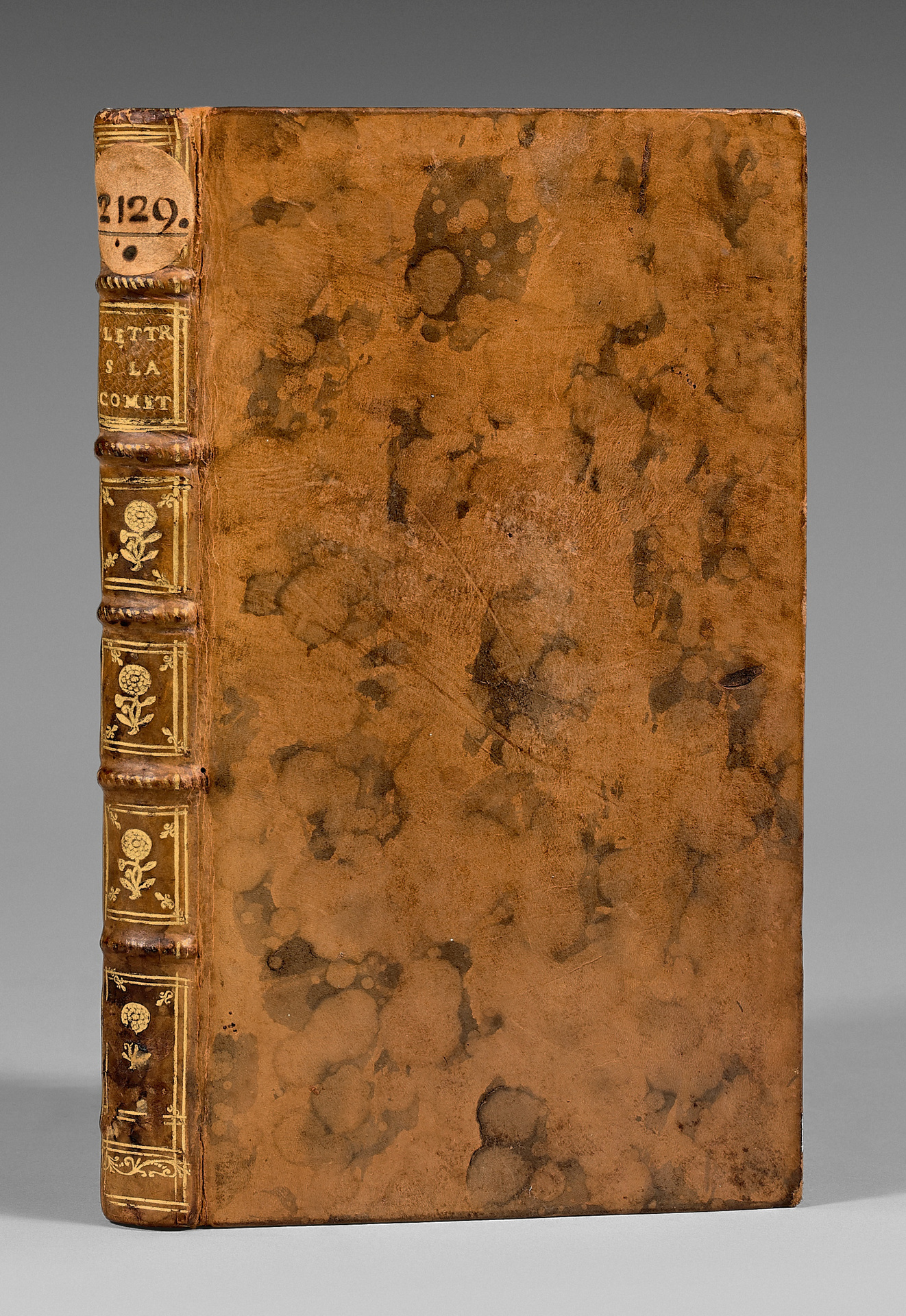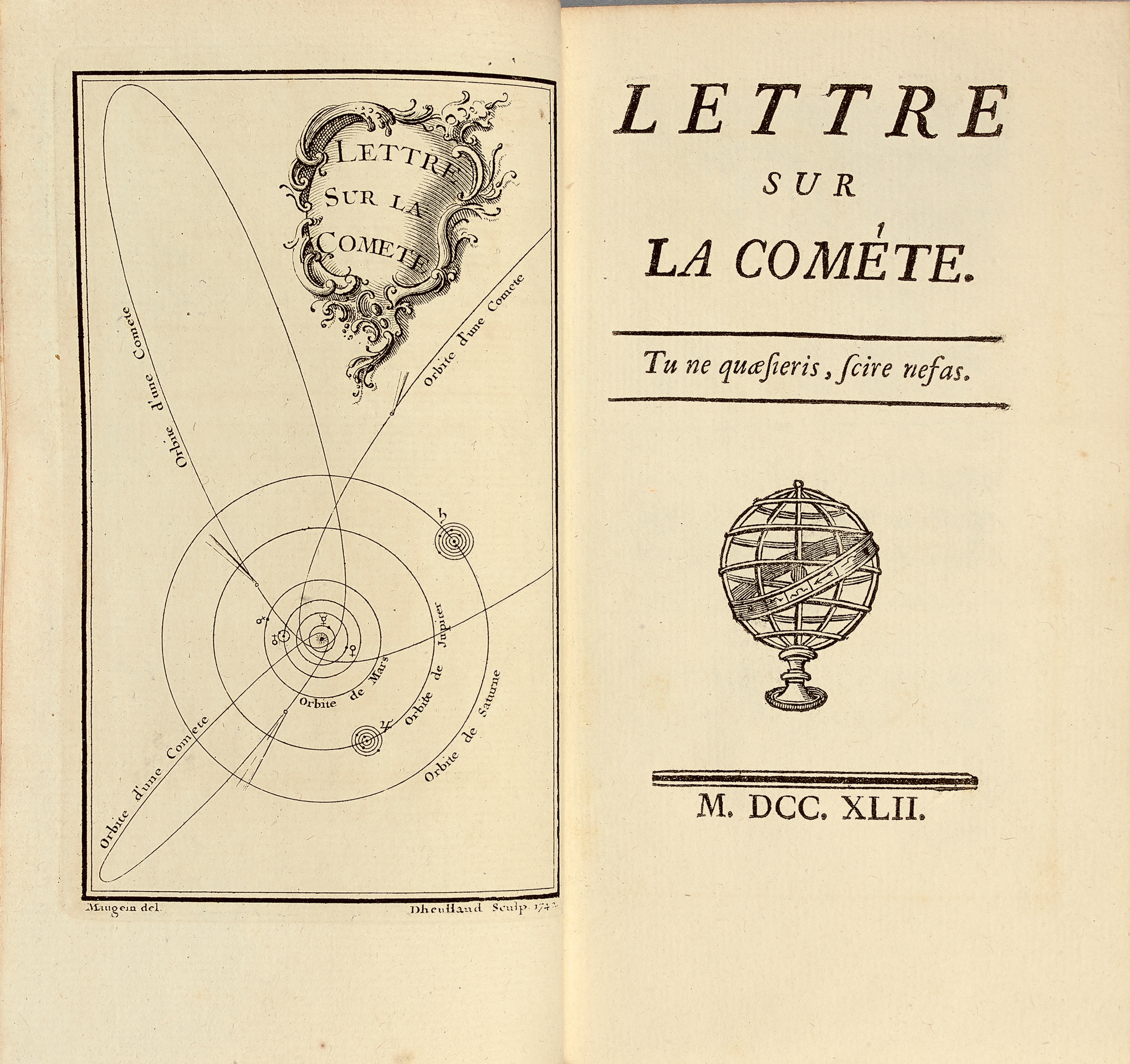N.p. [Paris], 1742.
12mo [156 x 87 mm] of (1) bl.l., (5) ll. (including the frontispiece), 111 pp., (1) bl.l. Bound in full contemporary marbled calf, spine ribbed and decorated, red mottled edges. Contemporary binding.
Rare first edition of this astronomy treatise written by Maupertuis on the occasion of the passage of the comet in 1742.
Graesse, Trésor de livres rares, IV, 448 ; Barbier, Dictionnaire des ouvrages anonymes, II, 1207 ; Brunet, III, 1543 ; Quérard, La France littéraire, V, 642 ; Houzeau-Lancaster 5826 ; DSB 9, 186 ; Lalande, 418.
One of the few copies on large vellum paper.
In this work addressed to a woman, Maupertuis drew up a treatise of astronomy before studying the comet whose appearance in the Parisian sky had caused a stir in 1742.
The comet tackled in this Letter was seen on the 2nd of March 1742 at the Paris Observatory. The author explains here Newton’s system.
Maupertuis, in his Lettre sur la comète, considering the extreme heat the one of 1680 had contracted towards the sun, seems to believe that if the comet had passed by near the Earth, it would have reduced it to ashes, or would have vitrified it, and that if its tail only had reached us, the Earth would have been flooded with burning and destructive exhalations.
Pierre-Louis Moreau de Maupertuis (1698-1759) was a French philosopher, geometrician and astronomer. Travelling for his instruction along with scholars of the time, he formed up a friendship with the Bernoulli, La Condamine and Voltaire, whom he made an enthusiastic disciple of Newton’s system. In 1737, he was sent by Maurepas to the North Pole with an expedition that was supposed to measure a degree of the earthly meridian. In 1740, Frederic II had appointed him president of the Berlin Academy. In 1743, the London Royal Society, then the French Academy welcomed him.
We owe him the measurement of the polar arc, the proof of the flattened shape of the earth, but first and foremost the mechanism of the trajectories of comets.
“The comet observed on the 2nd of March 1742 at the Paris Observatory was an opportunity for him to address a letter to a lady in which he gathered everything that had been said about theses stars, true or false. But far from reassuring men, he shows the damages the comets could cause in the universe if they came across our planet.” (Biographie générale, 34, 389).
“The details given in the ‘Lettre sur la comète’ were of interest at a time when the astronomical science wasn’t as popular as it is today. According to Maupertuis, this comet could have stolen our moon from us, and, ‘if we were off with this’, he said, ‘we shouldn’t complain’. (P. Levot, Biographie bretonne, II, 428)
Maupertuis “devoted most of the book to a clear summary of the current state of knowledge about comets, including an overview of the dynamics of the Newtonian solar system and Halley’s heroic calculations of cometary orbits. It evolved into a set piece on the analytical power of Newtonian cosmology. Along the way, the extremely elliptical orbits of comets undermined any cosmology built on swirling vortices carrying planets around the sun. Maupertuis’s choice of style and genre for his discussion of comets once again enabled him to make a splash on the literary science.” Terrall, The Man Who Flattened the Earth. Maupertuis and the Sciences in the Enlightenment, pp. 193-95.
Precious copy on large Holland paper, complete with its frontispiece, known as the frontispiece of comets, drawn by Maugein and engraved by Dheulland, preserved in its very well preserved contemporary binding.




